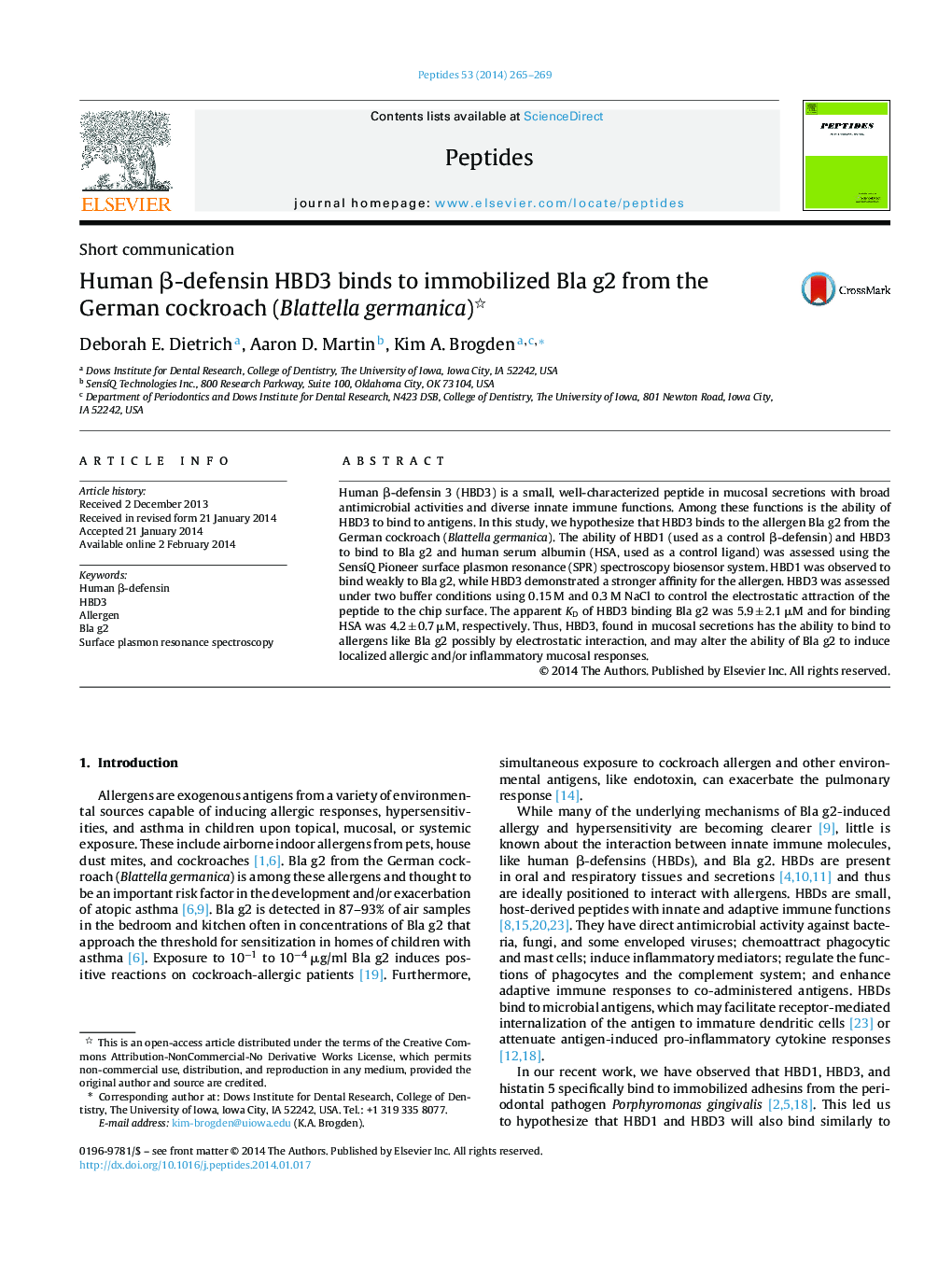| Article ID | Journal | Published Year | Pages | File Type |
|---|---|---|---|---|
| 8348464 | Peptides | 2014 | 5 Pages |
Abstract
Human β-defensin 3 (HBD3) is a small, well-characterized peptide in mucosal secretions with broad antimicrobial activities and diverse innate immune functions. Among these functions is the ability of HBD3 to bind to antigens. In this study, we hypothesize that HBD3 binds to the allergen Bla g2 from the German cockroach (Blattella germanica). The ability of HBD1 (used as a control β-defensin) and HBD3 to bind to Bla g2 and human serum albumin (HSA, used as a control ligand) was assessed using the SensÃQ Pioneer surface plasmon resonance (SPR) spectroscopy biosensor system. HBD1 was observed to bind weakly to Bla g2, while HBD3 demonstrated a stronger affinity for the allergen. HBD3 was assessed under two buffer conditions using 0.15 M and 0.3 M NaCl to control the electrostatic attraction of the peptide to the chip surface. The apparent KD of HBD3 binding Bla g2 was 5.9 ± 2.1 μM and for binding HSA was 4.2 ± 0.7 μM, respectively. Thus, HBD3, found in mucosal secretions has the ability to bind to allergens like Bla g2 possibly by electrostatic interaction, and may alter the ability of Bla g2 to induce localized allergic and/or inflammatory mucosal responses.
Related Topics
Life Sciences
Biochemistry, Genetics and Molecular Biology
Biochemistry
Authors
Deborah E. Dietrich, Aaron D. Martin, Kim A. Brogden,
